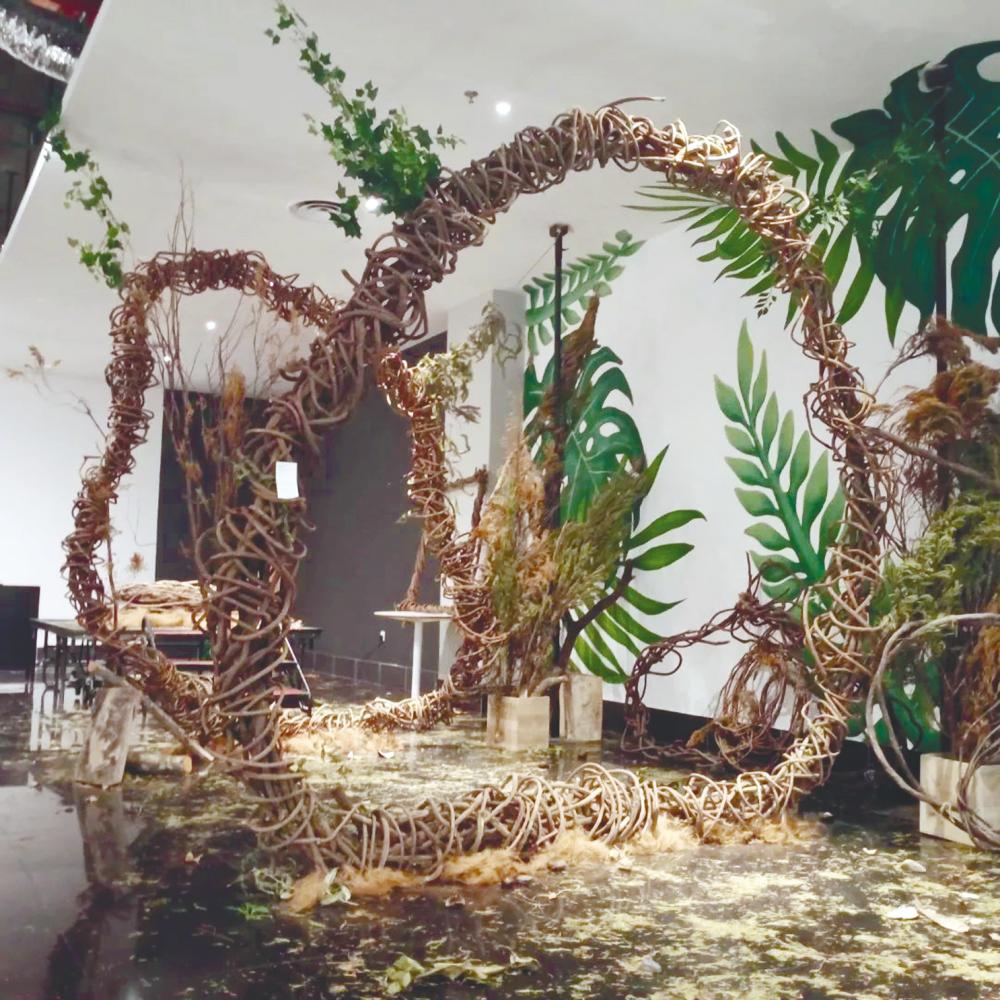A BORNEO jungle sculpturist artist named M. Sahzy (full name Mohd Sahrul Haziq Sarbini), currently living in Kuching, Sarawak, creates a stunning sculptures in the form of portals, inspired by the ones made by the Iban community to escape spirit worlds in the jungle.
In the Iban culture, it is believed that children tend to get lost in the jungle because ‘bunian’ will hide the path or mountain from their view, causing them to get lost in the dense Sarawakian rainforest.
To escape from the hidden world, their Iban ancestors would build a portal that appears like a large wreath, and the ancestors would go through it. By doing this, they would not get lost, nor have their view hidden by any spritual beings.
These stories about his ancestors, the spirit world, different dimensions and the forest inspired Sahzy to create his own version of the portal.
His goal was to reconnect with Iban traditions and culture, as well as to connect with his love of nature. As an artist, Sahzy wishes to convey the idea that we as humans can make something beautiful using items we can find in nature, or recycled materials.
Through his artworks, Sahzy – who is also a land artist and a filmmaker – hopes to convey the importance of recycling, as well as the values in culture, the jungle and nature in general.
He wants to show to people how important nature is and, at the same time, connect with his roots through a modern approach. His fascinating portals look raw, rustic and yet are beautiful pieces of art made by weaving roots and vines into a huge round form. The portals appear artistic despite the fact that they were made using items found by the road side and within the jungle. After each exhibition, Sahzy returns everything back to the nature – the jungle, where it belongs.

How and when did you develop a passion for art?
“I am an environmental artist based in Kuching, Sarawak, and Borneo. Since I was young, I have loved telling stories through various mediums that I have learned in life, such as graphic design, filming, painting, and sculpting.
“After years of experience, I am now confident enough to share my artwork for others to see and experience.
“Other than that, about three years ago, I got the opportunity to be a protégé of my mentor, Spencer Byles, a forest sculpture artist from the United Kingdom.
“Now, I am doing my solo journey as a proud Sarawakian and environmentalist.”

Tell us about your upbringing in an Iban village, including the culture and environment, and how it influenced your art.
“My dad is Malay, and my mum is Iban. In my mother’s village, Sebuyau, the majority are Ibanese, while in my dad’s village, Tabuan Melayu, Malays are the majority community.
“Two different worlds and cultures; both teach positive and critical values in my life. One is closer to me and made me feel in awe of the intricacy of nature, and the other guided me to the principles of capitalism in every form.
“Coming from an underprivileged family, my parents barely made ends meet, with five children, and I am the youngest one, in a village where the youngest are less likely to get a good education.
“Our only choices are to be a good or bad person, a cop or a criminal.
“My four brothers were all army officers or police officers. I decided to choose a different path from my brothers, and I became an artist.
“As I always love telling a story to create awareness and to highlight what’s happening around me, my environment directly influences my art, in general.”

What is your creative process?
“A lot of errors and faults. Experiments, and just being bold and adventurous merged with materials, along with inspiration from stories, folklore, and the environment.
“Sketching and keeping a journal. Take your time to deliver the outcome and put yourself on a platform where people can recognise your talent.”
What does your sculpture art represent, and how are these ‘portals’ connected to us?
“My land art, mostly made in the natural environment of the jungle, includes sculptures that reflect an affiliation between the materials, the space in which I work, and my own ‘imagination and ideas’.
“I investigate the possibilities that exist within the materials; in addition, each sculpture represents a special experience that the materials would have offered over weeks or months [that it took to make them]. The materials become the text, and the sculpture becomes the story.

“This is the concept behind my favourite sculpture, Portals, which was inspired by my grandmother’s stories.
“She used to tell me that, once upon a time, the Ibanese tended to get lost in the jungle and mountains. They believe it was hidden by the ‘bunians’ or, in other words, they get lost in the spirit world.
“In order to get away from it, they created a portal with a single vine or stick in the shape of a circle and went through it.
“I was inspired by this story and made my own version of portals. Now, I put these portals everywhere in Sarawak, in both public areas and jungles.”
What is your future plan?
“To be able to pursue my journey of travelling around the world and creating artwork depending on the environment’s materials. It makes no difference whether the platform is a festival, workshop, art residency, or personal project.”









